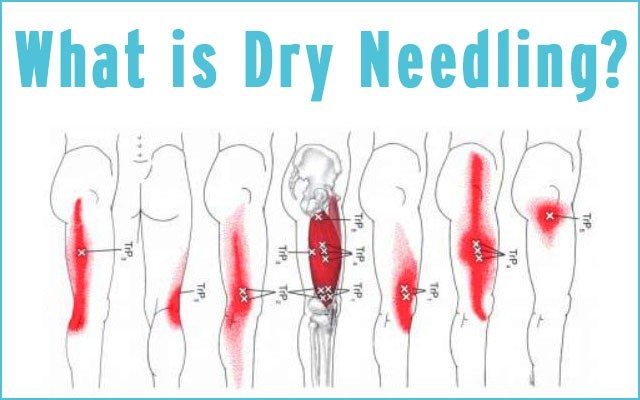Taping For Heel Pain: Is It A Good Method For Pain Relief?

Heel pain can make your life miserable as physical movement is essential. There are several ankle and foot conditions for which different treatments are available. Well, some of the approaches used are really helpful in treating heel pain. Taping for heel pain is one such effective technique that has become quite popular now.
How Does Taping Help With Heel Pain?
If you have been to a sports event or watched a basketball match or bicycle race, you might have seen strips of tape splayed across knees, shoulders, backs, and abs. This is what the therapeutic technique of taping is. This technique is widely used to ensure solid support, reduce pain and swelling, and improve performance. In this article, let us get into the details of taping and how it helps relieve heel pain.

What Is Taping? And How Does It Become A Therapeutic Technique?
Taping is a very common adjunct or temporary technique used by athletes to protect their heels, knees, shoulders, etc. in the presence of an existing injury.
Taping is commonly used to prevent the movement of injured joints, soft tissue compression to lower swelling, as protection from re-injury, and support anatomical structures.
This technique is also used in rehabilitation or prevention situations requiring support and stability. Now, let us look at the different types of taping that exist.
Types Of Taping
1. Kinesiology Taping
Kinesiology taping or KT is a therapeutic technique that is quite famous in the field of sports. This method is used to treat or prevent sports injuries as well as for several other conditions.
Kinesiology Taping was developed by Dr. Kenzo Kase, a Japanese chiropractor with the intention to reduce pain and boat healing in soft tissues.
Some of the health benefits offered by kinesiology taping include reduced muscle fatigue, proprioceptive facilitation, pain inhibition, muscle facilitation, lowered delayed-onset muscle soreness, and better healing in cases such as edema, lymphatic damage, and blood flow.
2. Mulligan Taping
Mulligan taping is the next type of taping developed by Brain Mulligan who is well-known in manual therapy approaches. The technique that he proposes is the use of manually applied accessory joint glide with concomitant pain-free active movement. This method is known as mobilization with movement (MWM) and it is applied in directions that complement the applied MWM passive force to soft tissue or joints.
3. Mcconnell Taping
Mcconnell taping or Patellar taping is used to treat specific conditions like anterior knee pain, especially for patients with Chondromalacia Patellae and Patellofemoral Pain Syndrome. This type of taping corrects the tracking of the patella within the patellar groove. Some other important benefits offered by Mcconnell taping include stretching of the lateral soft tissue and strengthening the vastus medialis obliques.
Core Benefits Of Taping
Here are some of the important benefits that you can expect from taping:
- The main benefit of taping is preventing further injuries in daily life by offering support to ligaments, tendons, joints, and muscles
- This technique prevents unwanted joint movement
- Ensures better healing by providing complete support
- Alleviates pain, swelling, and spasm by fighting the pain-spasm-swelling cycle that happens in the body
- Protects and supports the injured area during exercise
- Even after it is removed, taping can be beneficial. With taping, the receptors in the skin, soft tissue, and joints get activated which will help in improving movement, balance, body awareness, and flexibility of the affected area
- Correctness deformity by reducing activity and stimulating opposite directional movement
Some of these benefits are achieved through a combination of mechanical, neuromuscular, and psychological effects of taping.
Goals Of Taping
In this section, let us explore the goals of taping one by one.
1. Prophylactic
One of the main goals of prophylactic taping is to prevent the occurrence of injuries, especially in sports activities
2. Rehabilitative
The next goal is for the treatment of injured musculoskeletal body parts by preventing movements during the healing process
3. Corrective
This goal is to correct the deformity by minimizing movement and facilitating opposite-directional movement.
4. Functional
This is to help a person, especially an athlete to carry out their daily activity or functional mobility while still healing from the injury.
Precautionary Measures
- The first thing to check is the skin sensitivity of the person or athlete to be taped. Ensure that the person is not allergic to the adhesive tape used for taping. Also, see if there are any rashes or broken skin in the area to be taped.
- It would be better if the hair in the area to be tapped is removed 12 hours prior to taping to prevent skin irritation or itchiness.
- Next, clean and prepare your skin so that no irritation or discomfort occurs while taping.
Side Effects Of Taping
Well, though taping is a therapeutic technique, it does have some adverse effects if proper care is not taken. The side effects of taping include:
- Skin Allergies- A few people are allergic to tape or the glue used on it. In such people, taping might cause skin reactions like redness, itchiness, and inflammation.
- Skin Chafing- Skin chafing or irritation occurs when a taped area rubs against the skin. This often occurs between thighs or between toes. To prevent this discomfort, you can apply a good skin lubricant and then tape that specific area.
- Blisters and Lacerations- Blisters and lacerations are caused due to improper taping or its removal.
How To Select The Type Of Taping?
It is based on the health requirements that you should use the type of taping. For managing stability or treating injuries, athletic or rigid taping is the best technique. It offers support, protection, immobilization, and rest. The taping most effective for pain, inflammation, and muscle dysfunction is Kinesiology taping.
So, this is all about taping and how it supports heel pain, joint pains, injuries, and other conditions. Based on your requirement, you can select the type of taping and do it with proper care and focus.
Dr. Edward Zelman
Dr. Edward Zelman is a distinguished and highly respected medical professional who has dedicated his career to the field of general medicine. With a profound commitment to patient care and a wealth of knowledge acquired over decades of practice, Dr. Zelman has earned a reputation as a trusted healthcare provider in his community. With a career defined by excellence and an unwavering commitment to the betterment of his patients and the broader community, Dr. Edward Zelman stands as a pillar of the medical field, dedicated to the principles of healing and compassionate care. At present, Dr. Edward Zelman is researching safe and effective natural remedies that can restore as well as maintain the youthful functioning of the body.
View All By Dr. Edward






